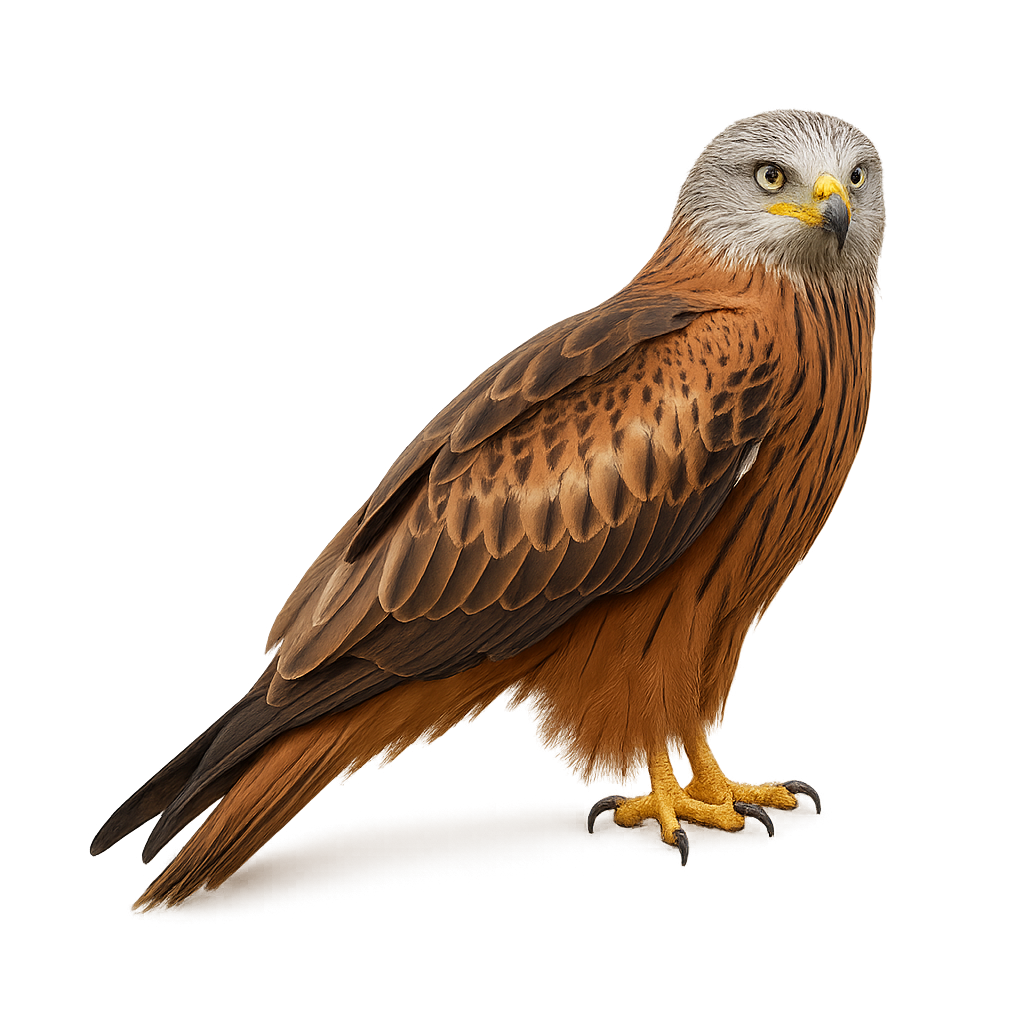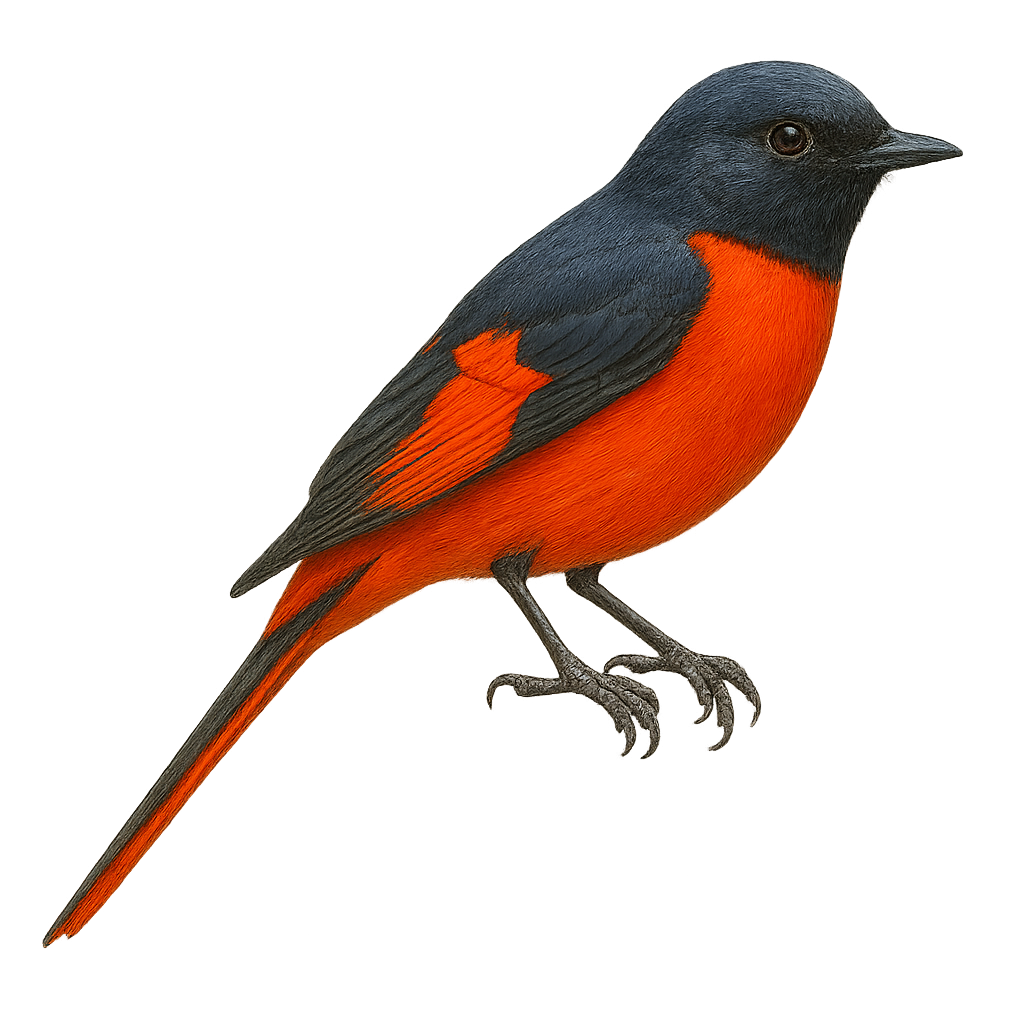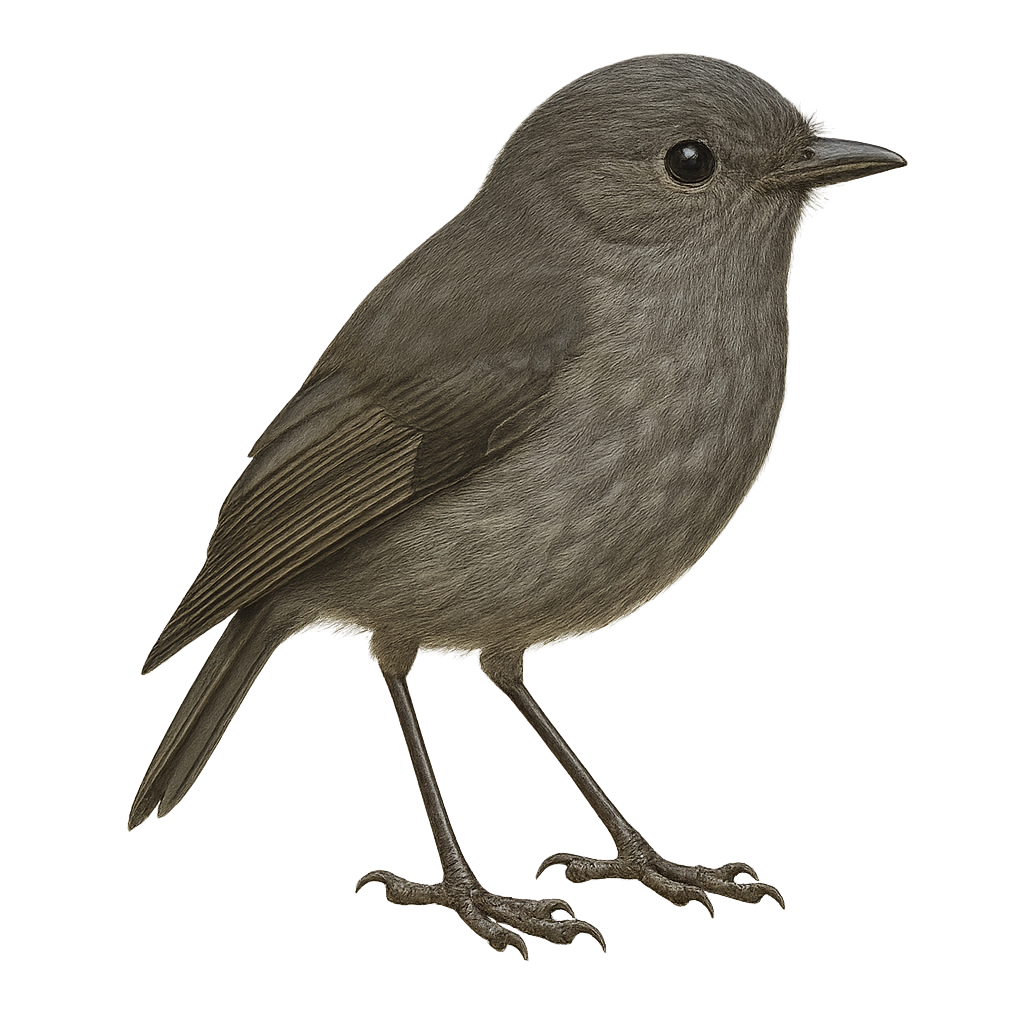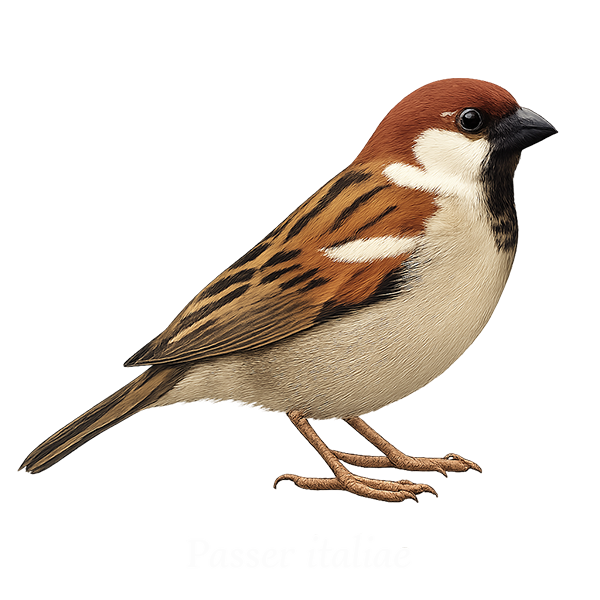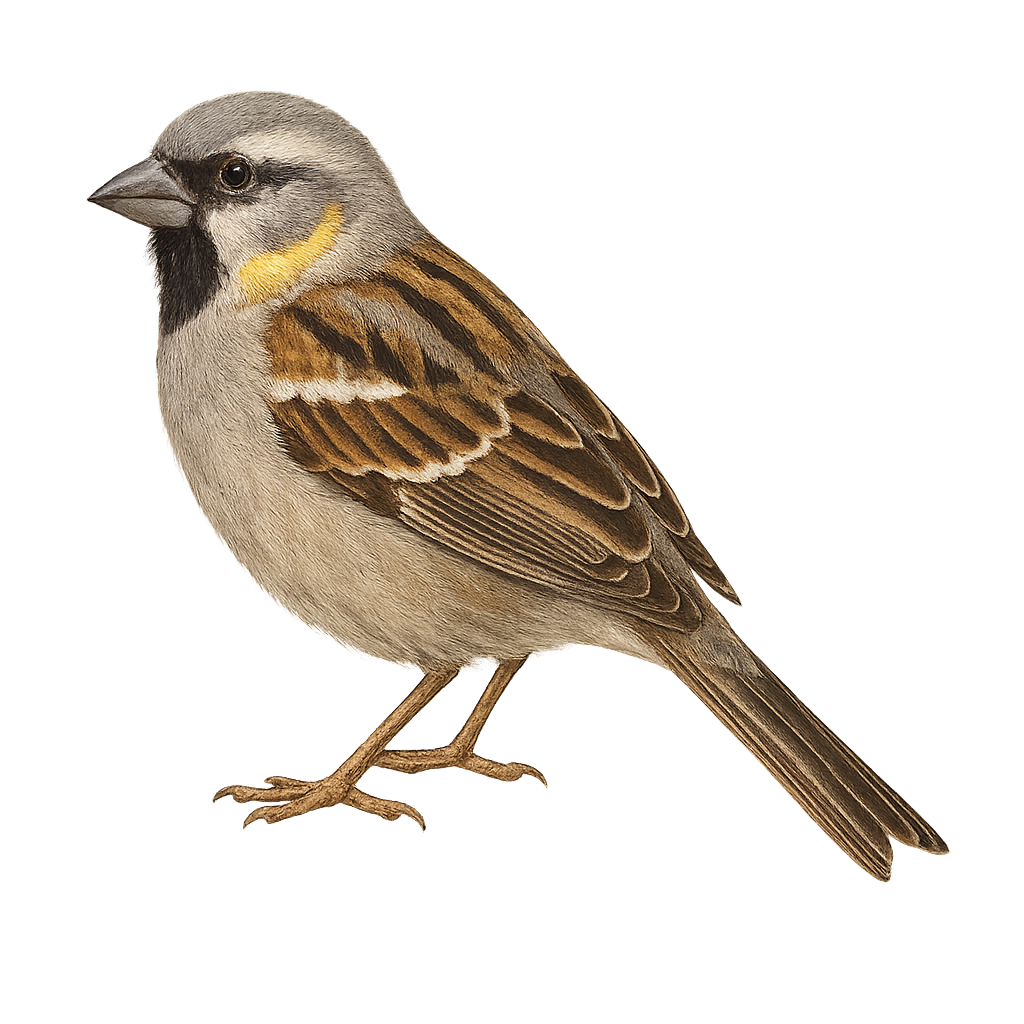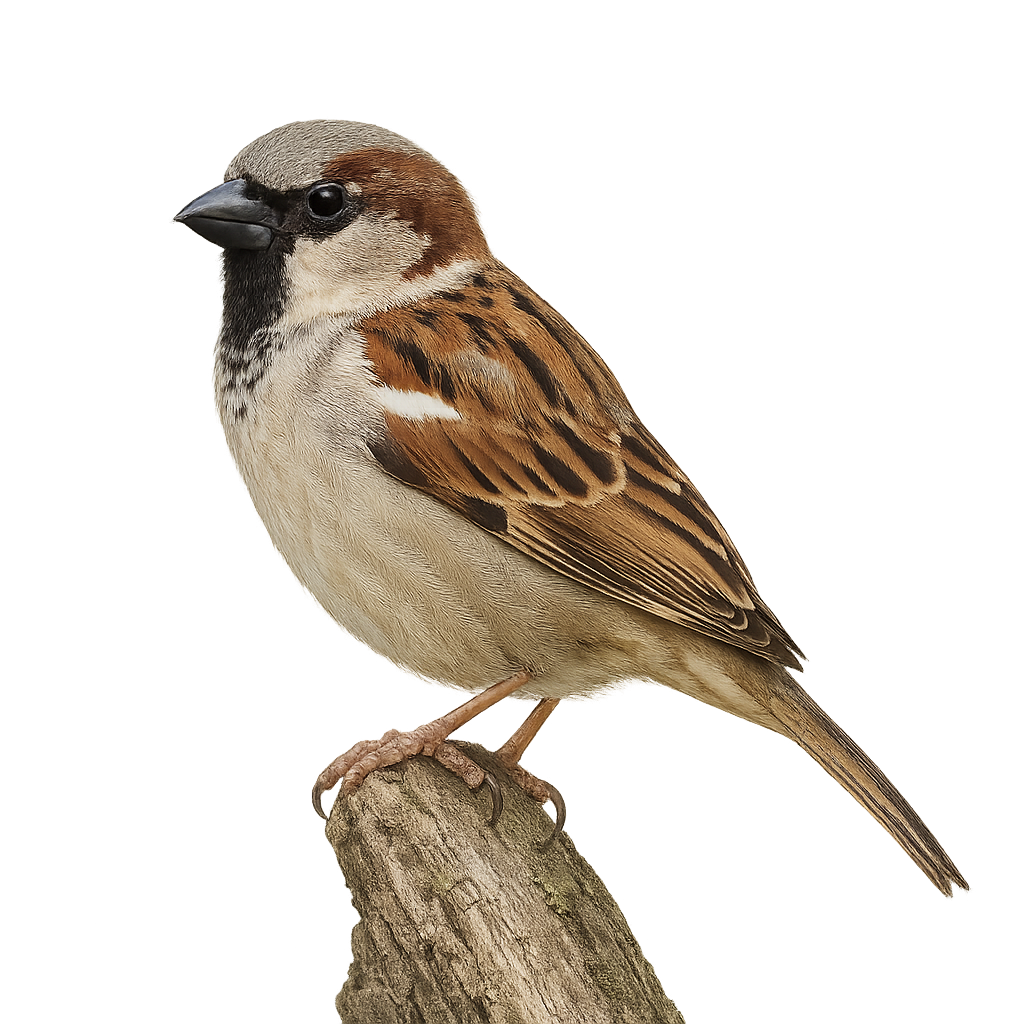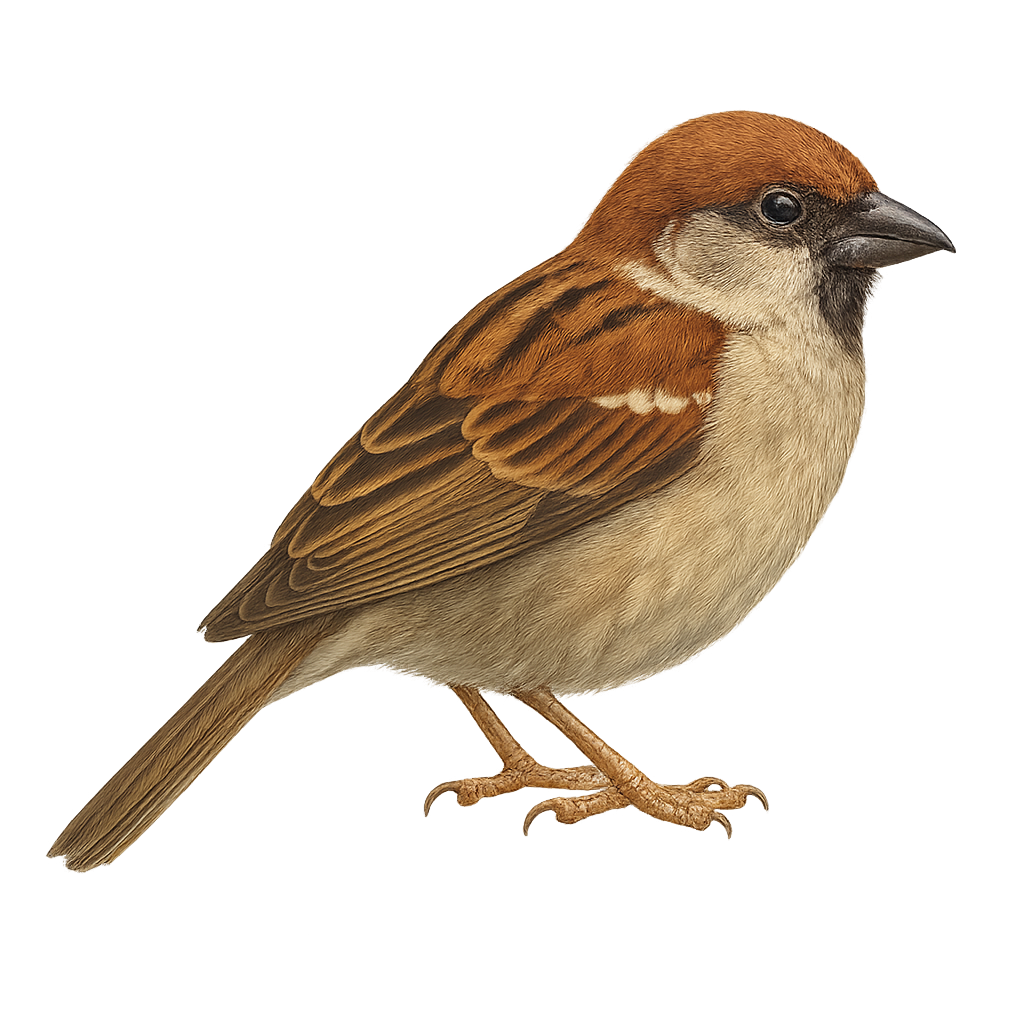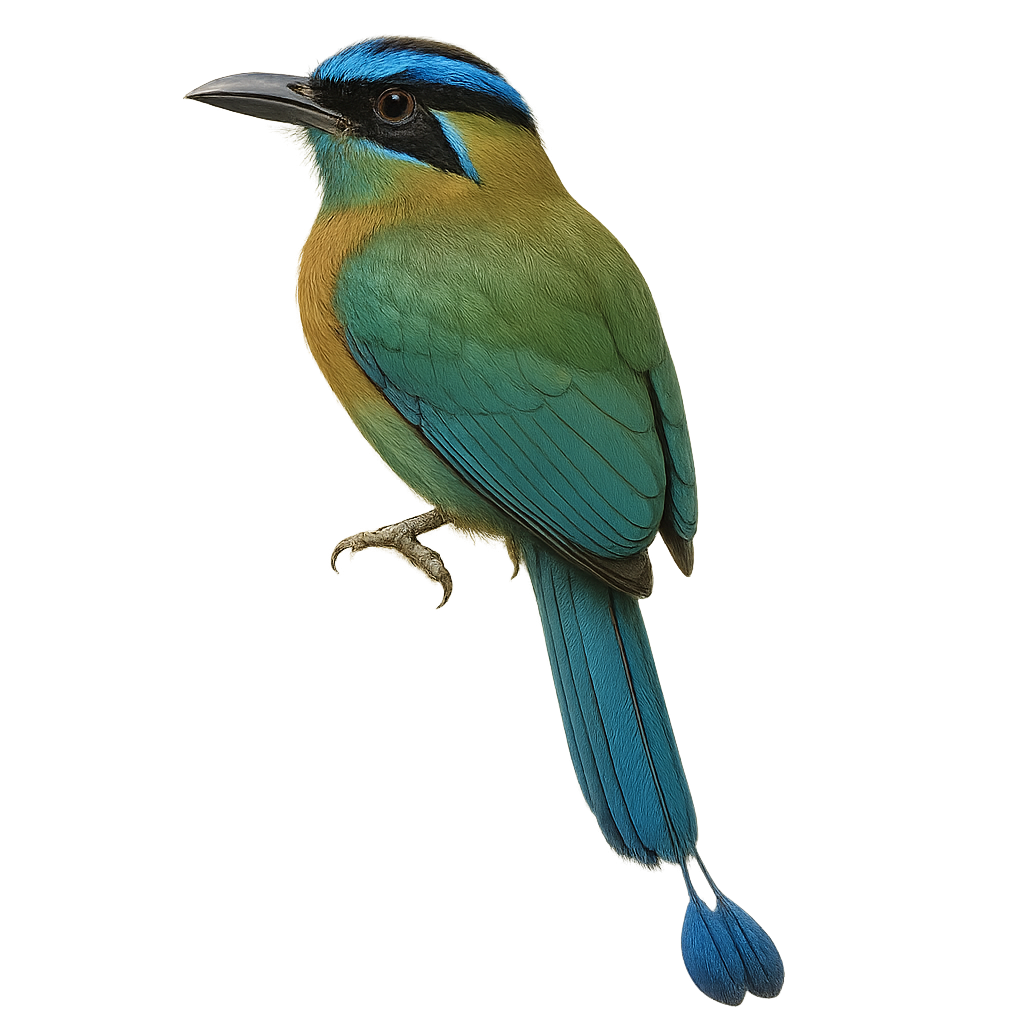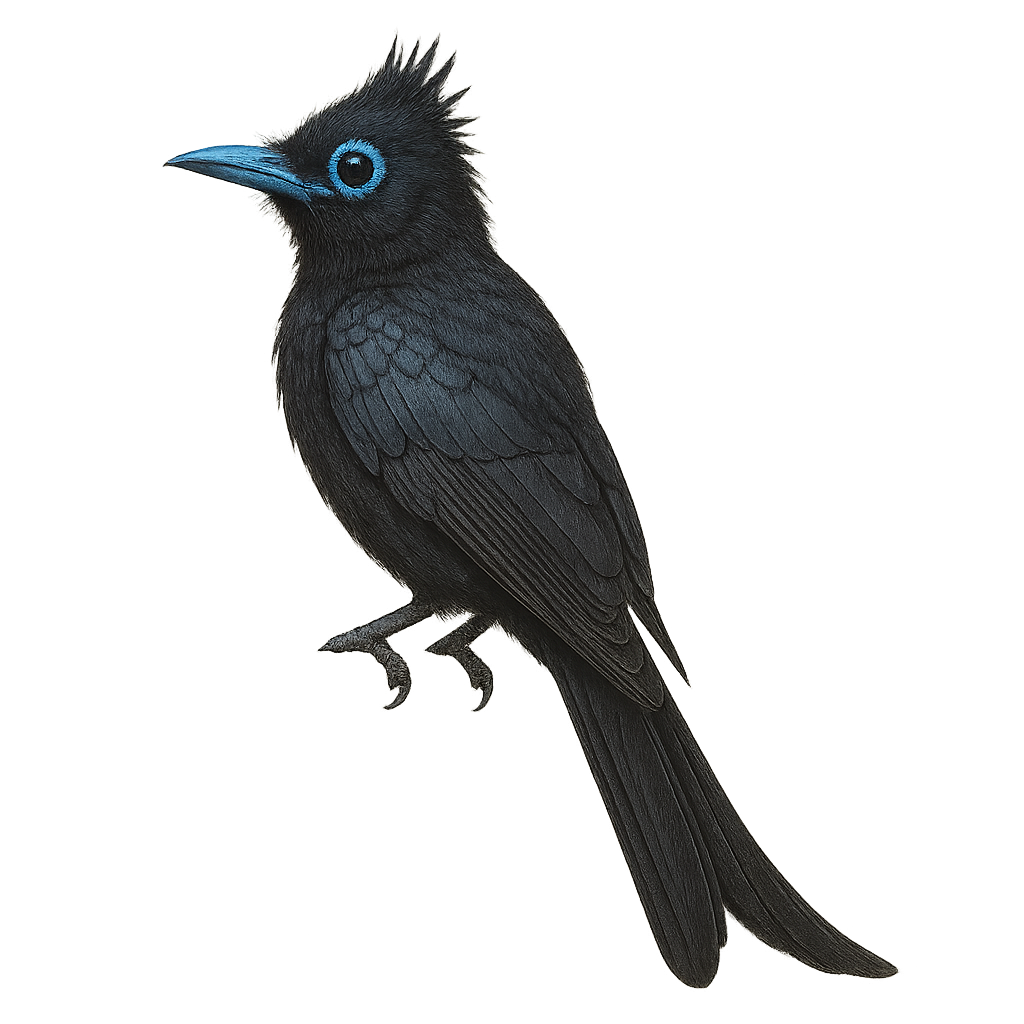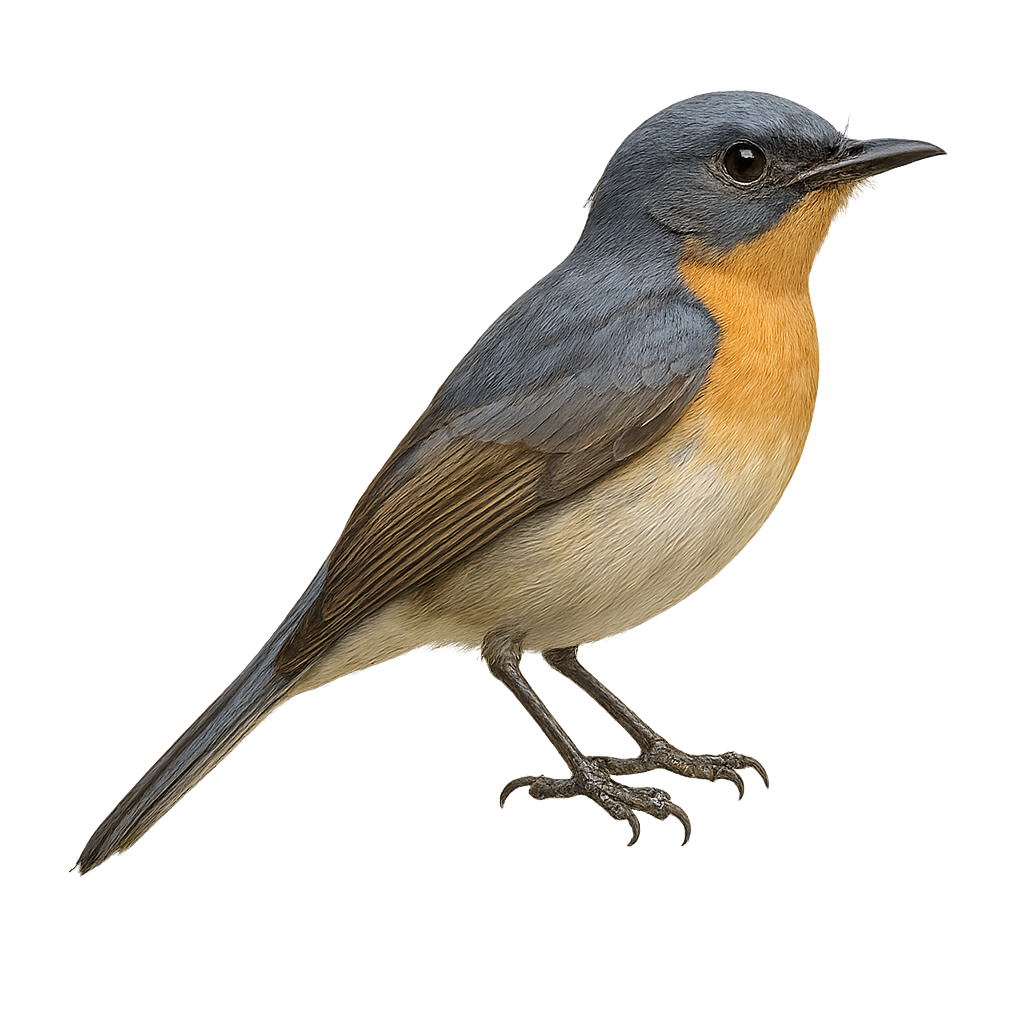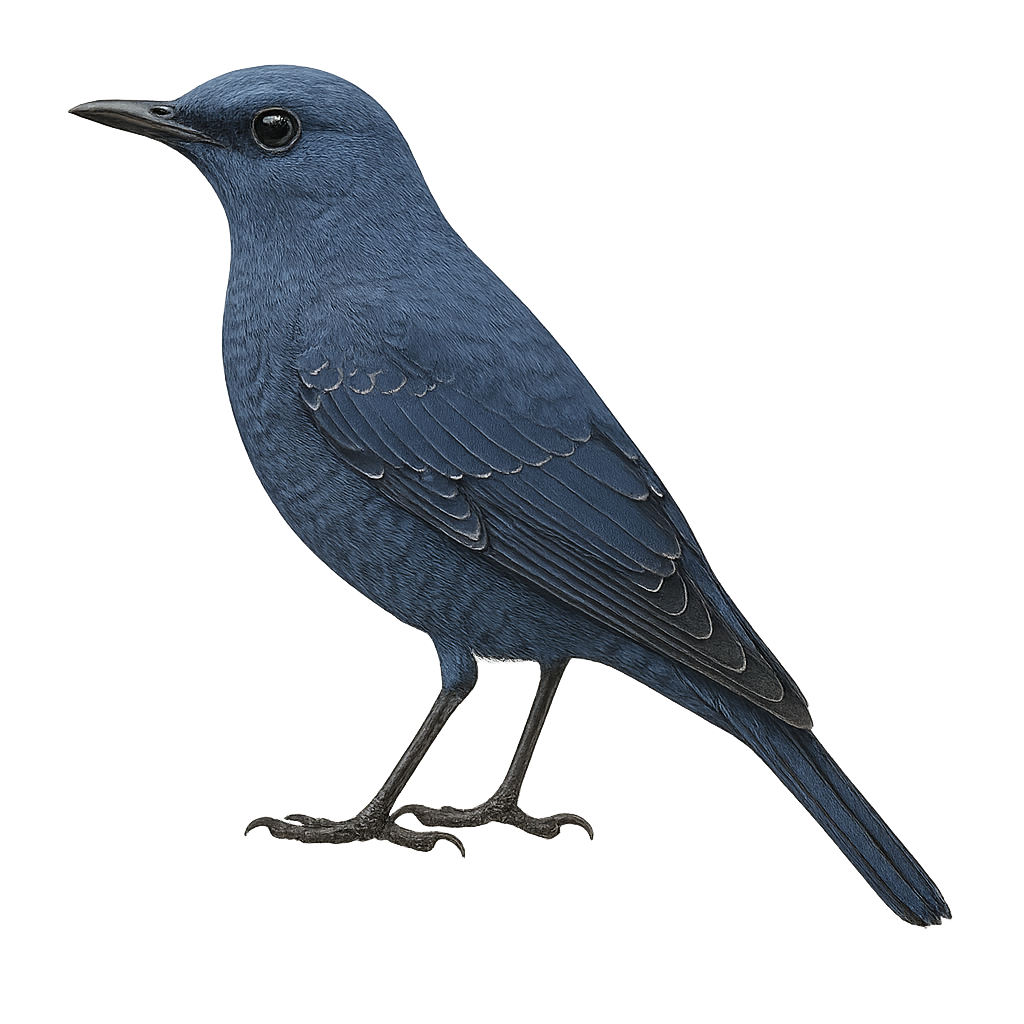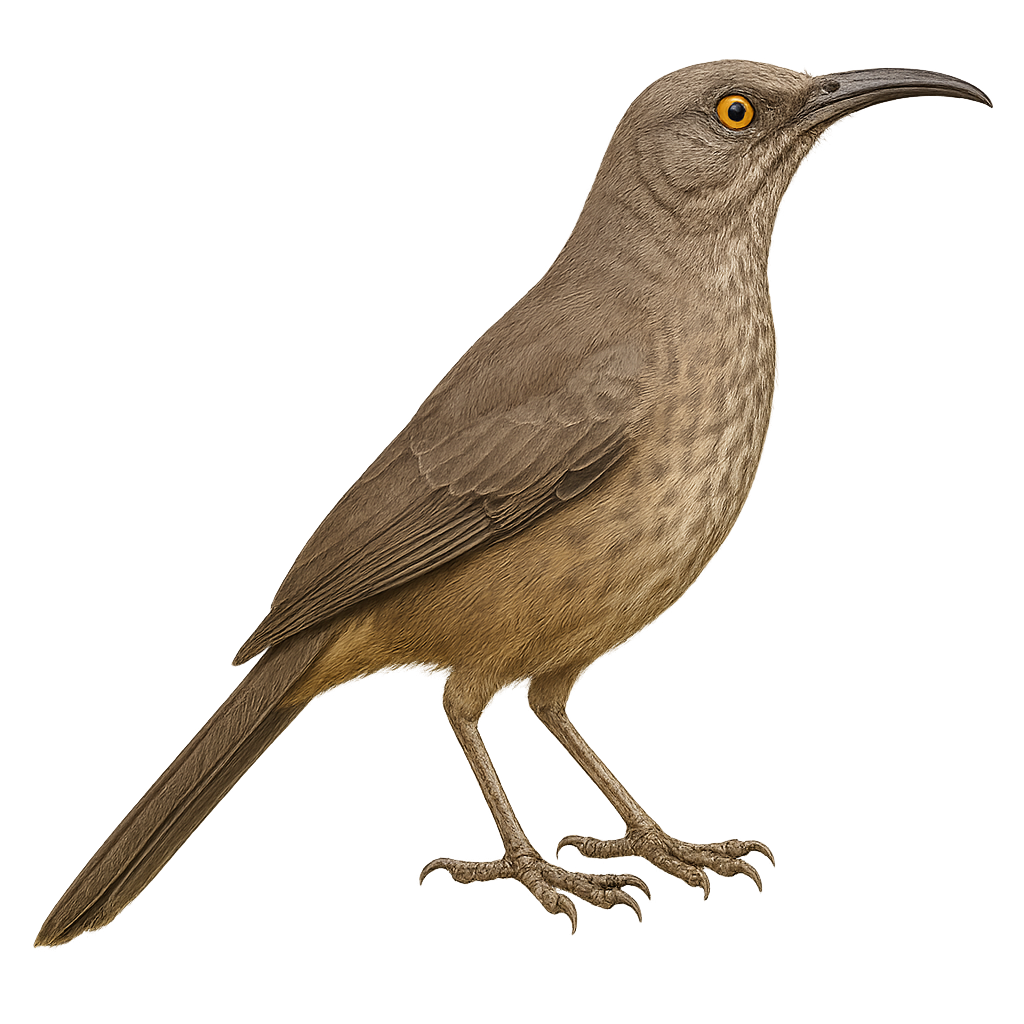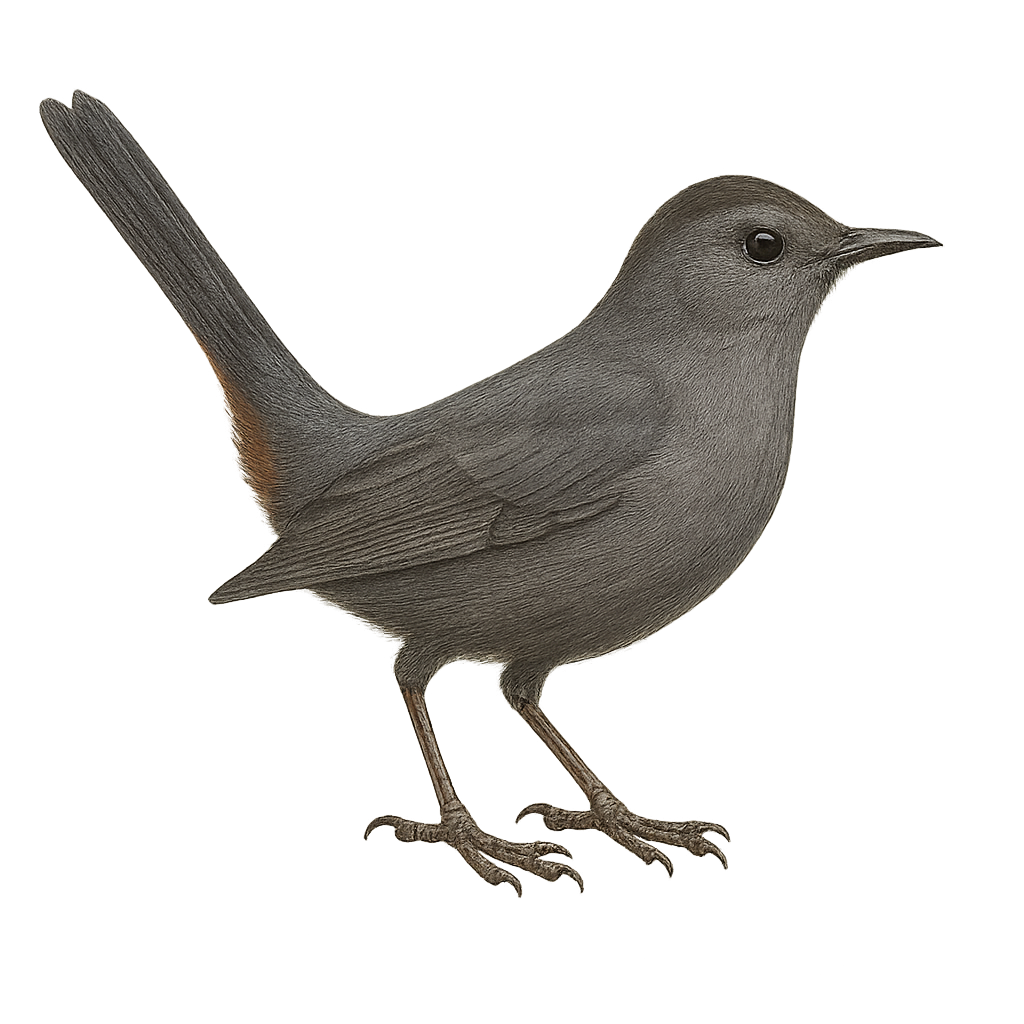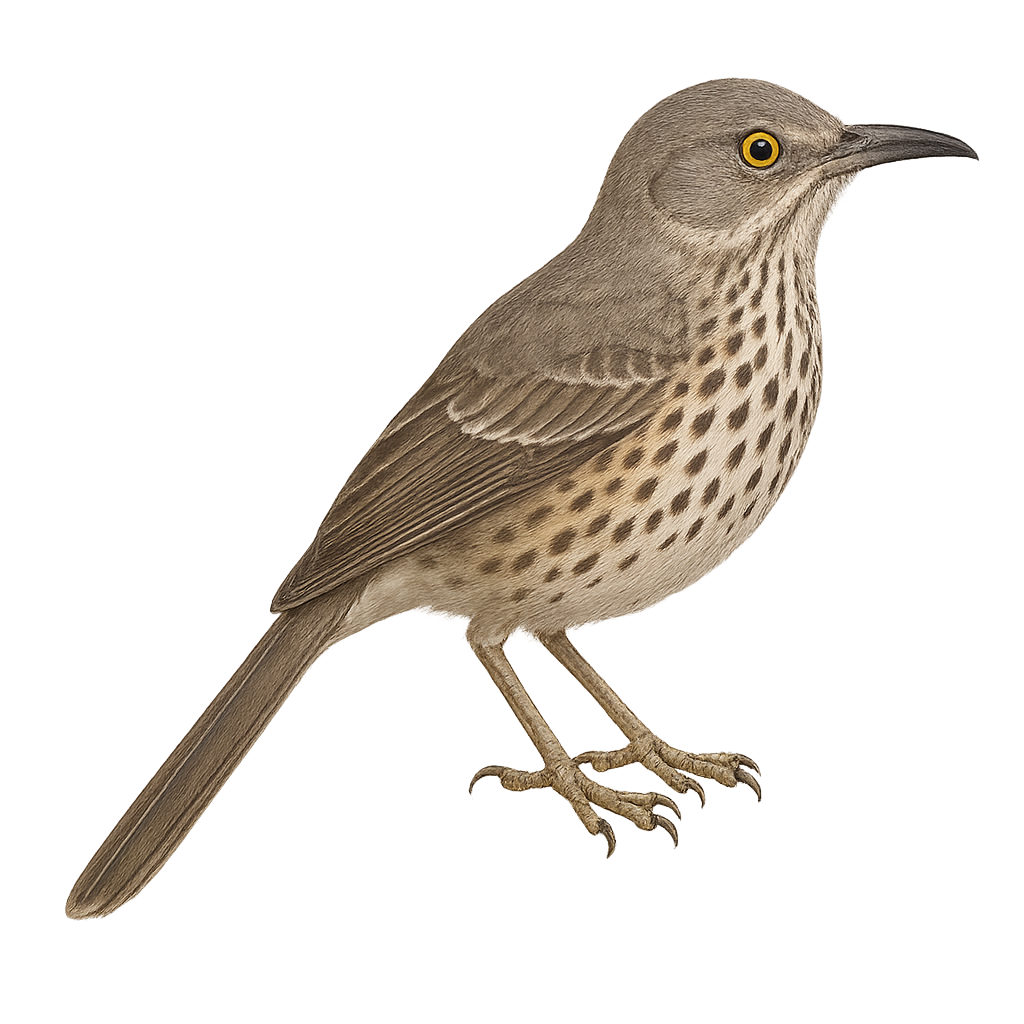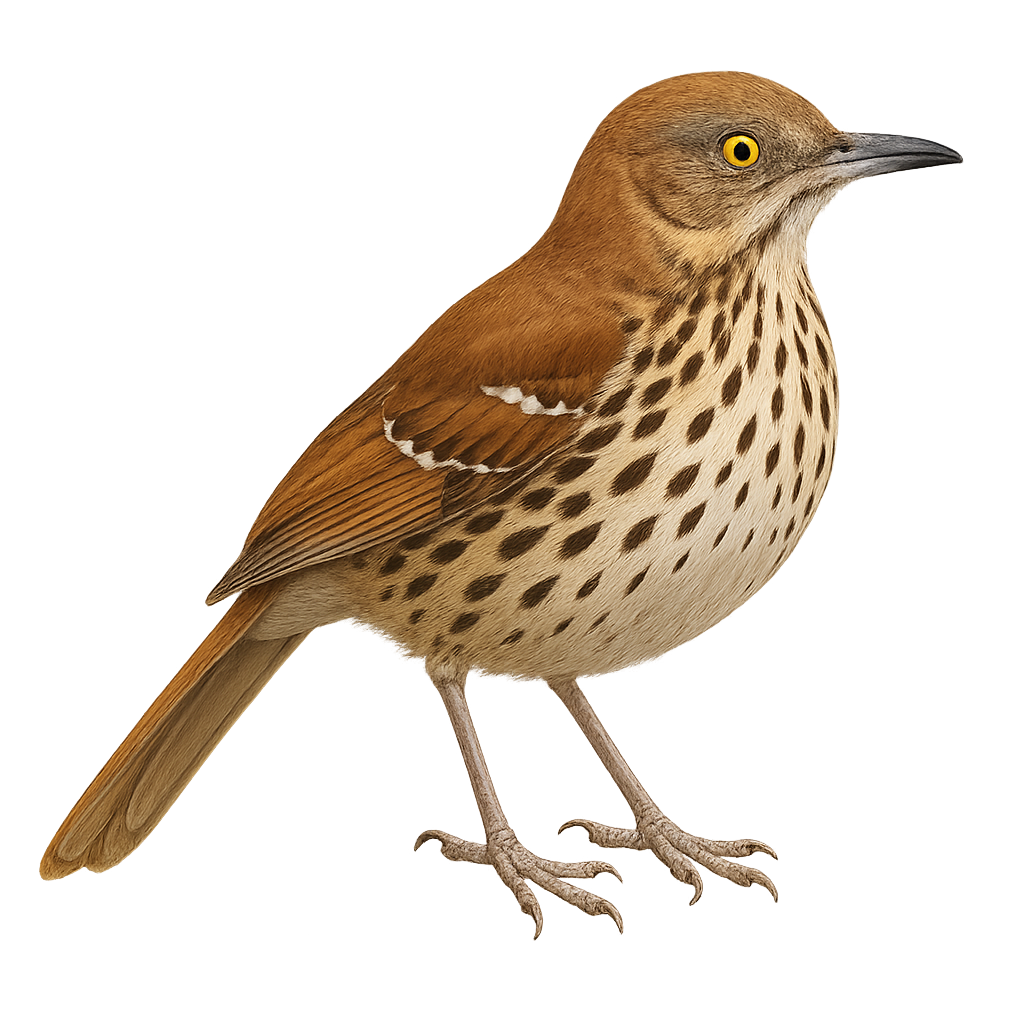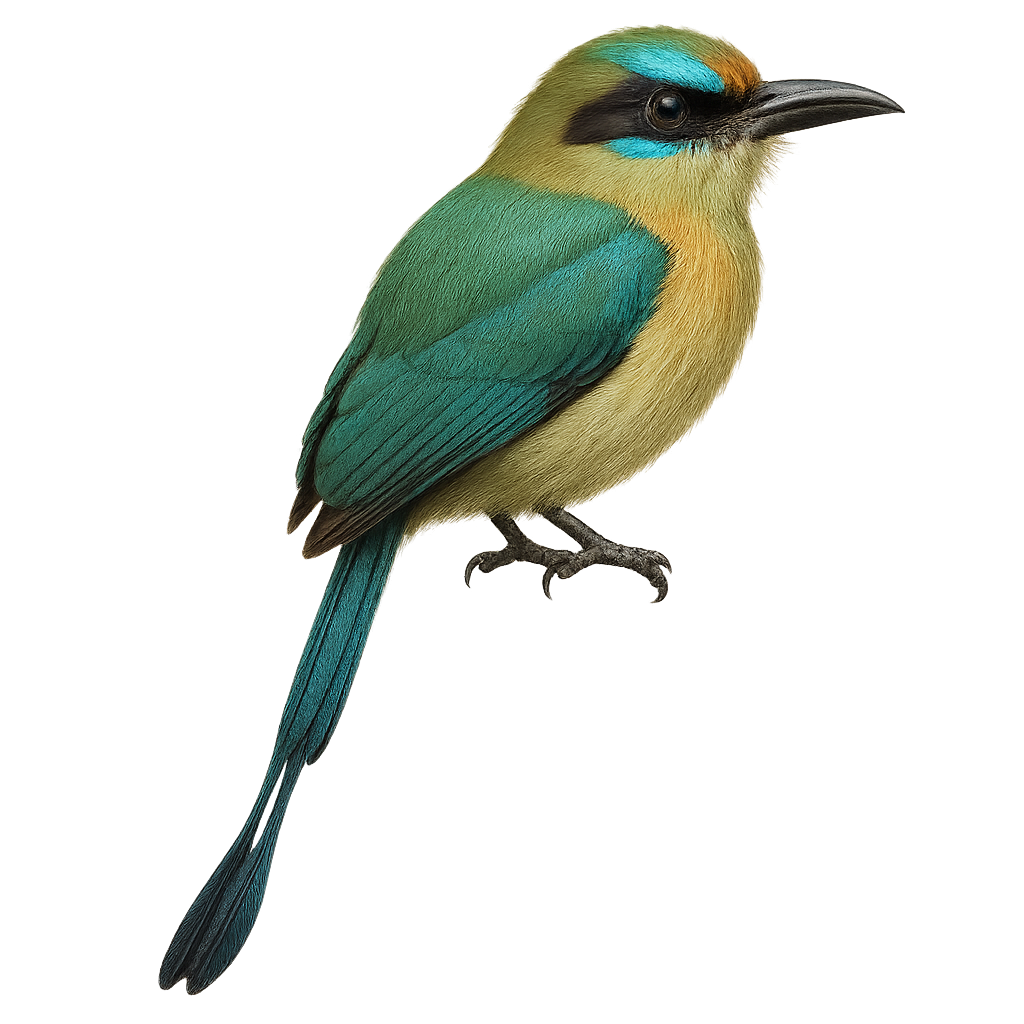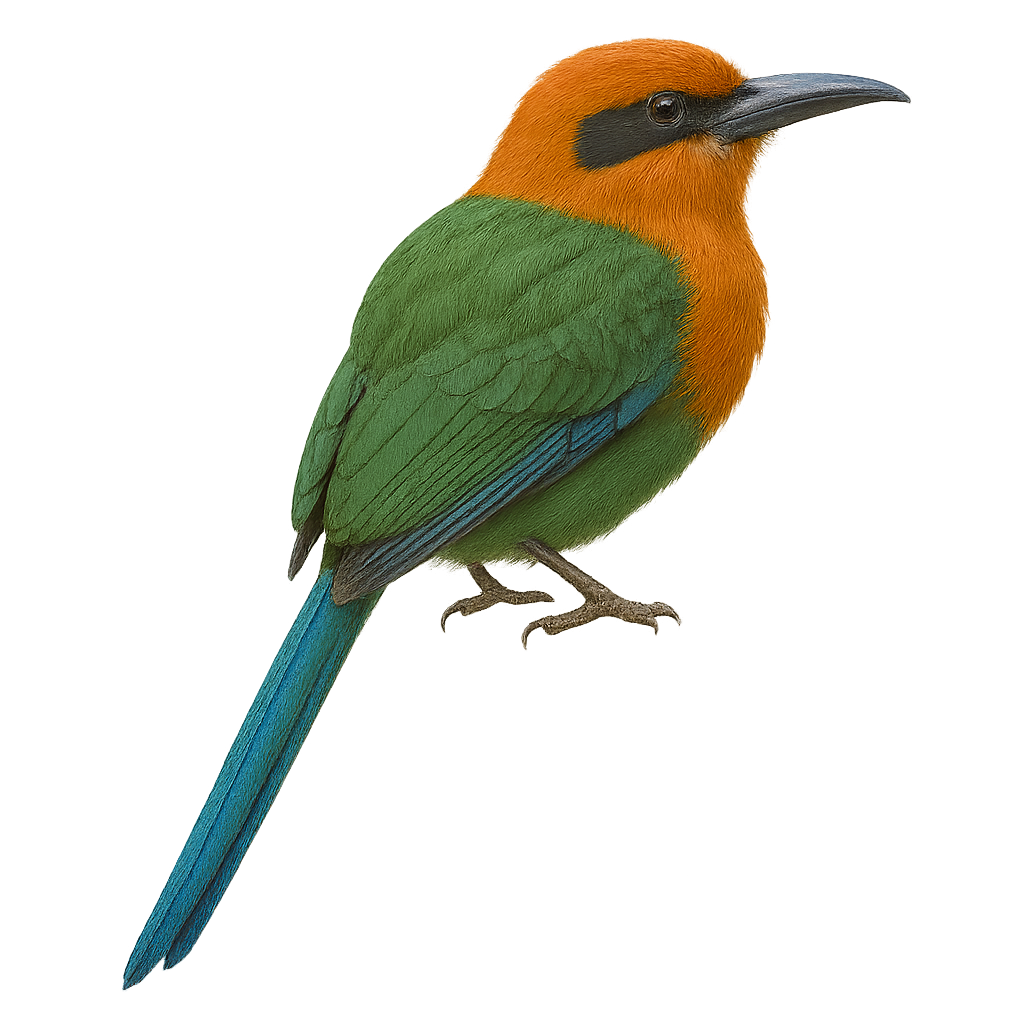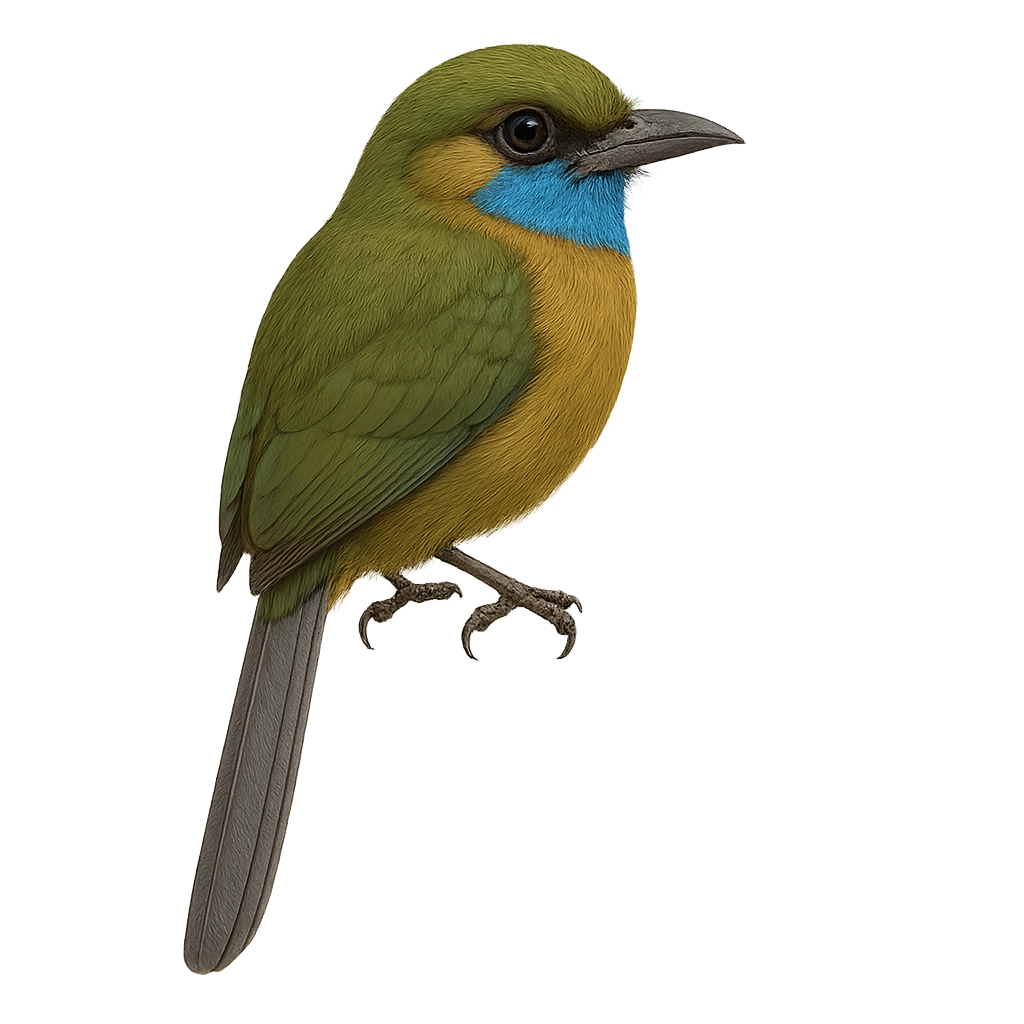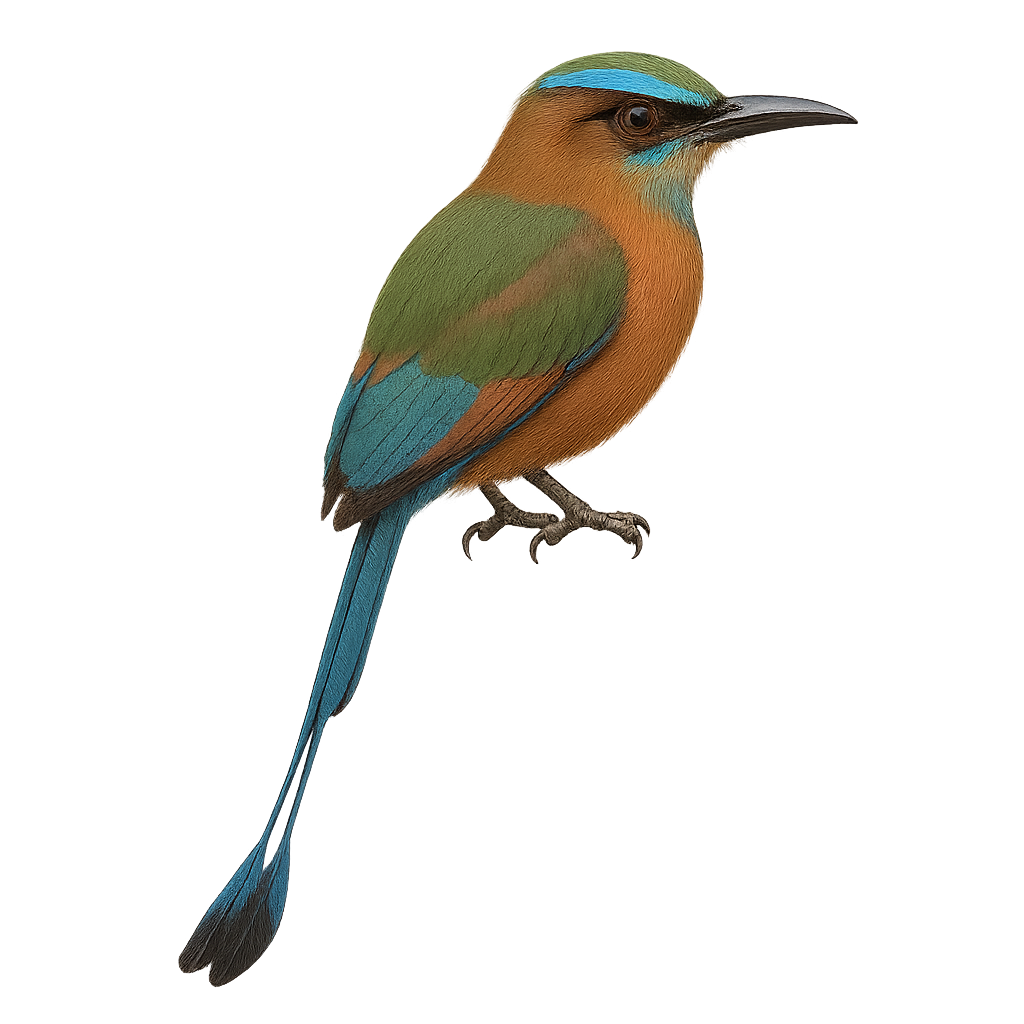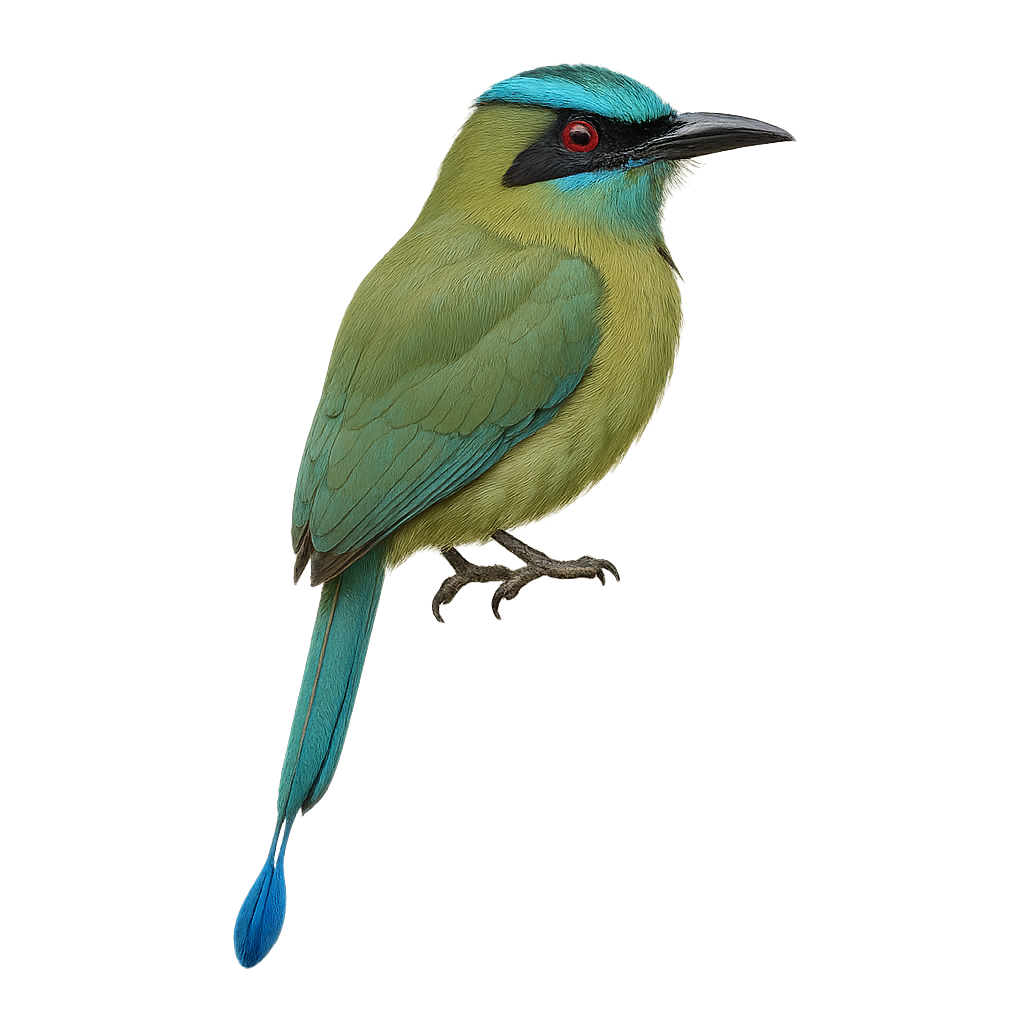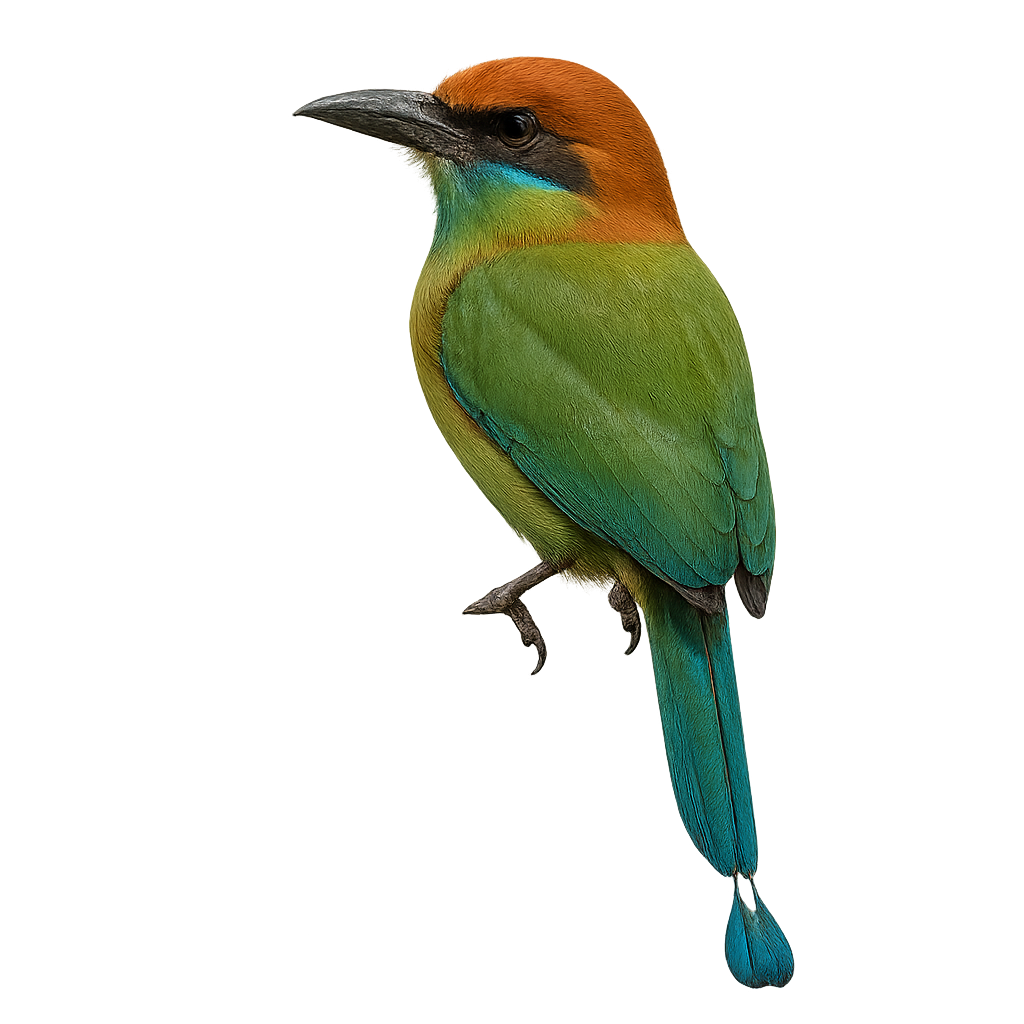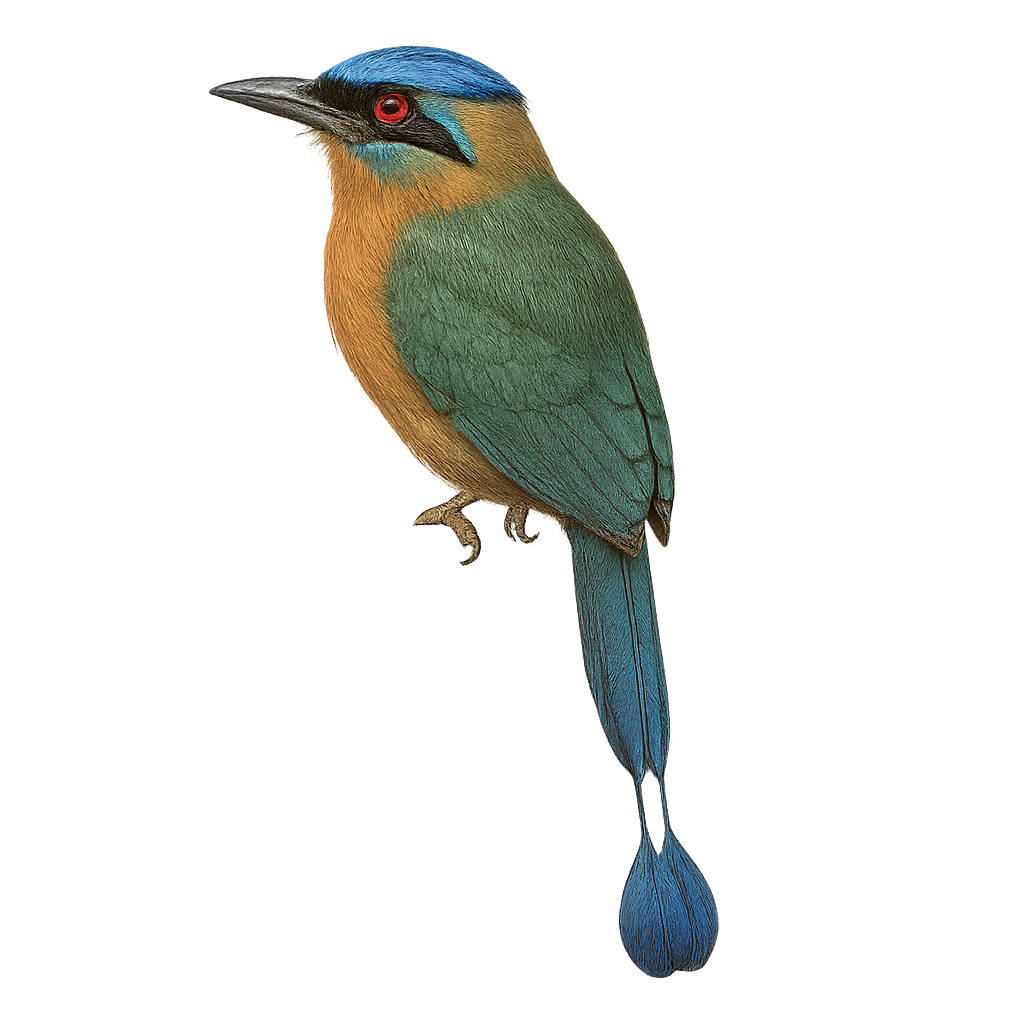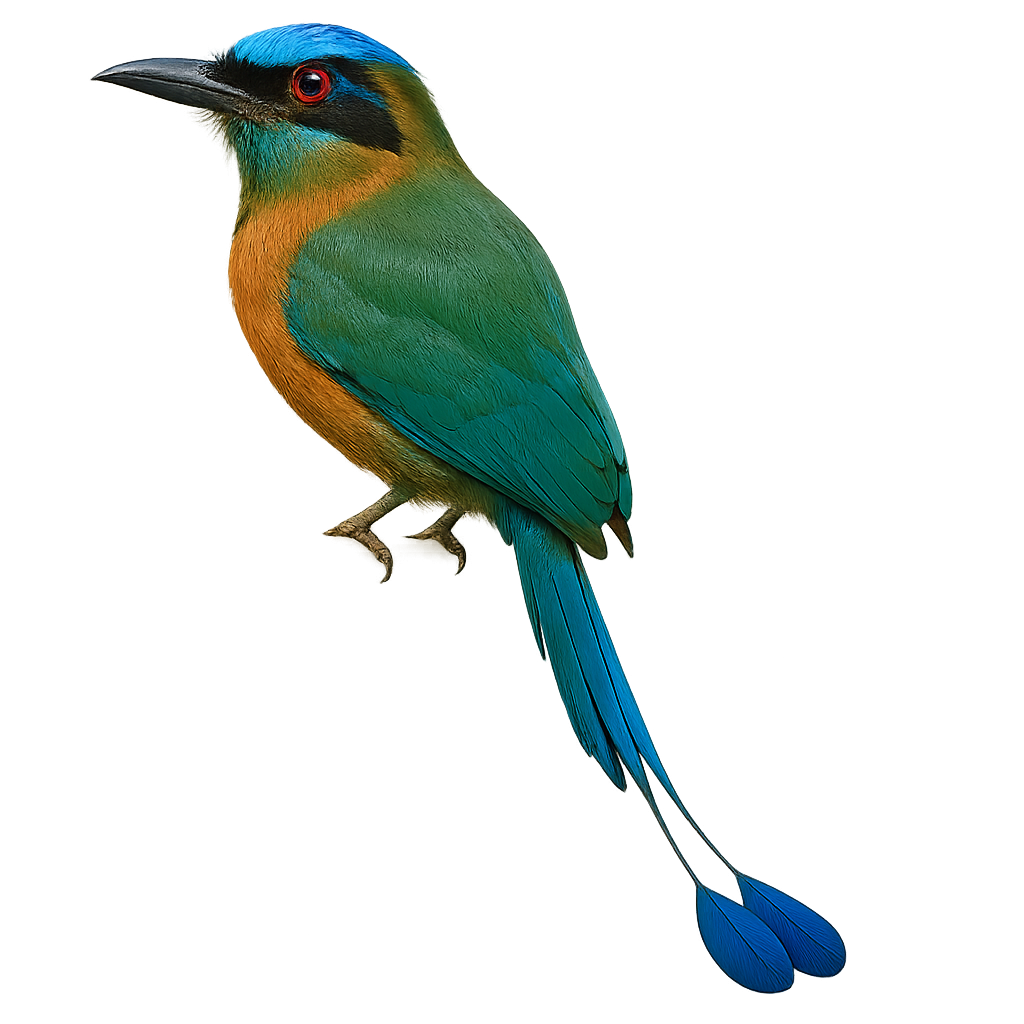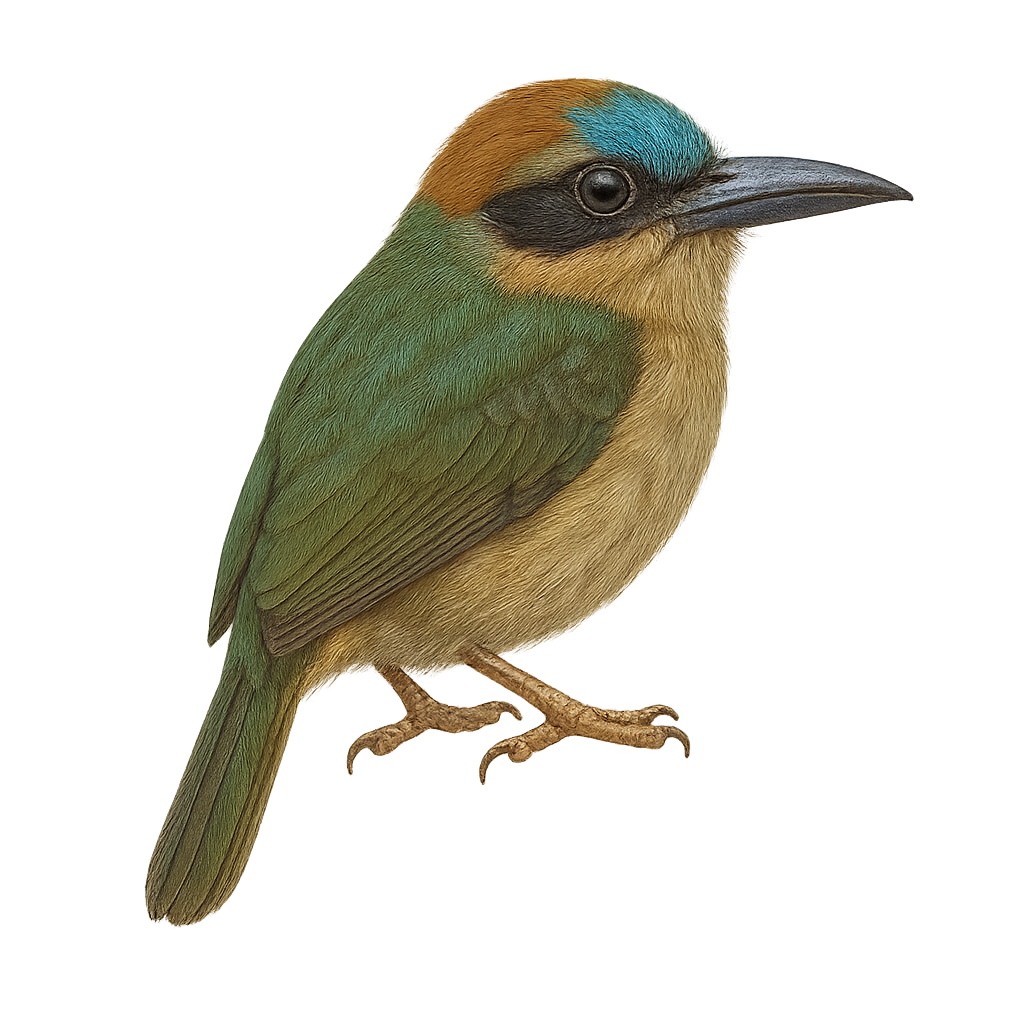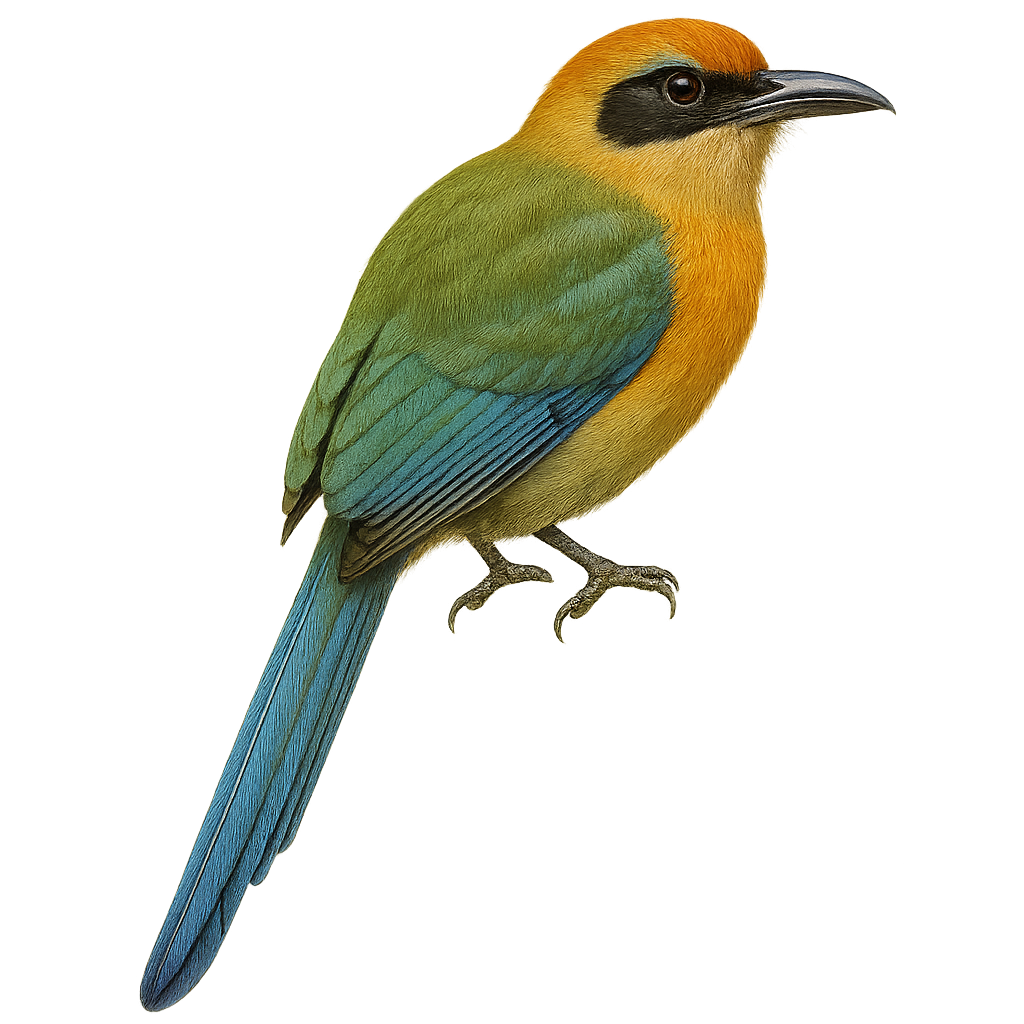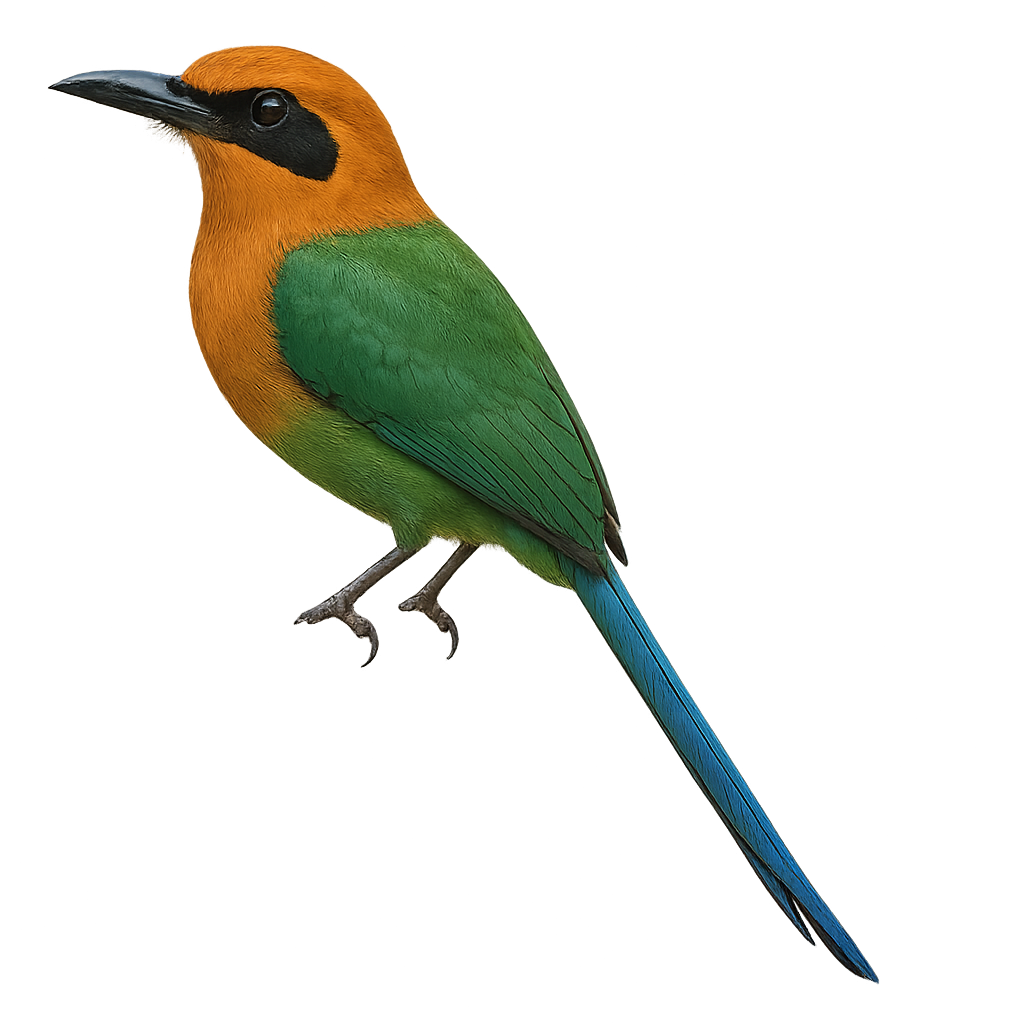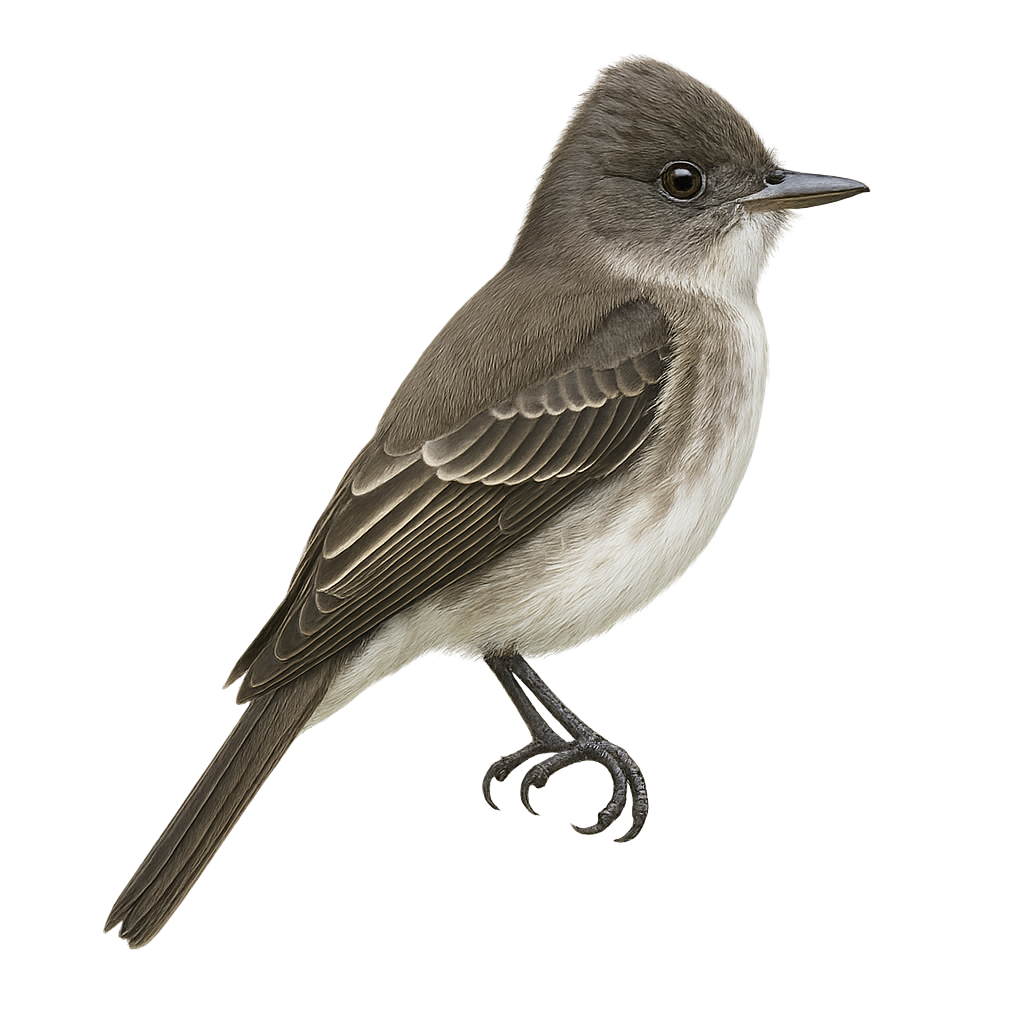The Red Kite is a large bird of prey, measuring about 60 to 70 cm in length, with a wingspan of 1.5 to 1.8 meters. It typically weighs between 1.2 and 1.5 kg. This raptor is distinguished by its reddish-brown plumage on the back and wings, with a lighter head and a deeply forked tail, giving it a characteristic silhouette in flight. The Red Kite primarily inhabits open forests, agricultural areas, and meadows, where it hunts small mammals, birds, insects, and carrion. It is an excellent glider and uses thermal currents to stay aloft effortlessly, allowing it to spot prey from a distance. The Red Kite is also a social bird, often seen in groups during the migration period, although it is generally solitary outside this time. While its population remains relatively stable, it faces threats such as habitat loss, pollution, and collisions with power lines.
The Scarlet Minivet, or Pericrocotus speciosus, is a striking bird with bright red plumage in males and yellow in females, complemented by black wings and tail. It inhabits the tropical and subtropical forests of South and Southeast Asia, primarily feeding on insects caught in flight. This bird is often seen in small flocks, moving nimbly among branches. Its melodious song and vivid colors make it a favorite among birdwatchers. Although relatively common within its range, deforestation poses a potential threat to its natural habitat.
The Petroica longipes, commonly known as the Long-legged Flyrobin, is a small bird from the Petroicidae family. It is endemic to New Zealand, primarily inhabiting dense forests and wooded areas. This passerine is distinguished by its black and white plumage, with a striking white breast and relatively long legs that give it an elegant appearance. The Long-legged Flyrobin is an insectivore, feeding mainly on small insects and spiders caught on the ground or low branches. It is known for its melodious song and elaborate courtship displays. Although its habitat is limited, it is not currently considered threatened.
The Italian Sparrow, Passer italiae, is a small, robust bird often mistaken for the House Sparrow. It features brown and grey plumage, with a dark brown cap and distinctive white cheeks. Males have a more pronounced black bib than females. This passerine is mainly sedentary, inhabiting urban and rural areas in southern Europe, especially in Italy and Corsica. It is omnivorous, feeding on seeds, insects, and crumbs. The Italian Sparrow is very social, often forming large flocks. It nests in cavities of buildings or trees, using various materials to build its nest.
The Dead Sea Sparrow, or Passer moabiticus, is a small passerine bird belonging to the Passeridae family. It is primarily found in the arid and semi-arid regions of the Middle East, especially around the Dead Sea, which gives it its English name. This sparrow is characterized by its gray and brown plumage, with lighter shades on the belly. Males have a gray cap and a black throat, while females are duller. They often live in colonies and are known for their melodious song. Their diet mainly consists of seeds and insects. Although relatively common in their range, their habitat is threatened by environmental degradation.
The house sparrow is a very common small bird, found primarily in urban environments, gardens, fields, and parks. It is easily recognized by its brown plumage, grey head, and black markings on its back and chest. This passerine bird is omnivorous, feeding on seeds, insects, and food scraps. Although highly social and often seen in large numbers, the house sparrow is in decline in some regions due to habitat loss and climate change.
The Desert Sparrow, Passer simplex, is a small, sturdy bird primarily inhabiting the arid regions of the Sahara and the Arabian Peninsula. Its plumage is generally pale, with shades of beige and gray, allowing it to blend into its desert surroundings. Males have a gray cap and a black throat, while females are more uniform and discreet. Adapted to life in extreme conditions, this sparrow feeds mainly on seeds and insects found in the sparse vegetation of oases. It is often seen in small groups, foraging or resting in the shade to escape the intense heat.
The Russet Sparrow, or Passer cinnamomeus, is a small passerine bird belonging to the family Passeridae. It is primarily found in Asia, especially in the mountainous regions of the Himalayas, southern China, and Japan. This sparrow is distinguished by its reddish-brown plumage on the back and wings, contrasting with a lighter belly. Males often sport a gray cap and a black throat, while females have duller colors. Adapted to rural and semi-urban areas, it thrives in human-modified environments. It primarily feeds on seeds, insects, and small fruits. Although its song is discreet, it is often seen in small groups, especially outside the breeding season.
The Lesson's Motmot is a colorful and fascinating bird native to the humid tropical forests of Central America. It is distinguished by its vibrant plumage, which combines shades of blue, green, and orange, and its long, racket-shaped tail. This bird measures about 38 to 48 cm in length and weighs between 100 and 160 grams. It is often seen perched quietly on a branch, scanning its surroundings for insects and small reptiles, which make up the bulk of its diet. The Lesson's Motmot is also known for its melodious and repetitive song that echoes through the canopy.
The Japanese Paradise Flycatcher, or Terpsiphone atrocaudata, is an elegant and fascinating bird primarily found in the dense forests of Japan, Korea, and China. This bird is renowned for its glossy black plumage and long tail feathers that can reach up to 30 cm in males. Females, on the other hand, display more subdued colors, with brownish hues and a shorter tail. The Japanese Paradise Flycatcher is a migratory bird, moving south for the winter. It primarily feeds on insects, which it catches in flight with remarkable agility. Its melodious and varied song is often heard at dawn and dusk, adding a unique soundscape to the forests it inhabits.
The Satin Flycatcher, or Myiagra cyanoleuca, is a medium-sized bird primarily found in Australia and New Guinea. This bird is easily recognizable by its bright blue plumage on the back and wings, contrasting with a striking white belly. Males and females exhibit sexual dimorphism, with males displaying more vibrant colors. They primarily inhabit rainforests, mangroves, and open wooded areas. Their diet mainly consists of insects, which they catch in flight thanks to their remarkable agility. The Satin Flycatcher is a partial migrant, moving north during the austral winter. Although their population is stable, deforestation poses a potential threat to their natural habitat.
The Blue Rock Thrush, Monticola solitarius, is a medium-sized bird, measuring about 21 to 23 cm in length. It is easily recognizable by its bright blue plumage in males, while females display more brownish tones. This bird is often seen perched on rocks or cliffs, from where it surveys its territory. It primarily feeds on insects and small invertebrates but also enjoys berries. The Blue Rock Thrush is a partial migrant, found in southern Europe, North Africa, and parts of Asia. It prefers rocky and mountainous habitats, often near water. Its melodious and flute-like song is a delight for birdwatchers.
The Curve-billed Thrasher is a bird with gray-brown plumage and lighter spots on its belly. Its long, curved bill is distinctive, allowing it to probe the ground for food. Primarily insectivorous, it also eats fruits and seeds. Found in the arid and semi-arid regions of the southwestern United States and Mexico, it frequents thorny bushes and desert areas. Known for its varied and melodious song, it uses this to defend its territory and attract a mate. The Curve-billed Thrasher is a resilient bird, capable of adapting to harsh environments.
The Gray Catbird, Dumetella carolinensis, is a medium-sized songbird known for its slate-gray plumage and distinctive black cap. Often found in dense thickets and hedgerows, it primarily feeds on insects and berries. Its varied and melodious song, often mimicking other birds, is a notable feature. This catbird is a migratory species, wintering in the southern United States and Central America, while breeding in eastern and central North America. It builds its nest in low shrubs, using twigs and grasses. Although generally discreet, it can become territorial during the breeding season, vigorously defending its space against intruders.
The LeConte's Thrasher is a discreet and little-known bird, endemic to the arid regions of the southwestern United States and northwestern Mexico. It is distinguished by its gray-brown plumage, long curved bill, and elongated tail. Adapted to desert environments, it primarily feeds on insects and small invertebrates that it finds in the sandy soil. Its melodious and varied song is often heard at dawn. The LeConte's Thrasher is monogamous and builds its nest in thorny bushes to protect itself from predators. Although its habitat is threatened by human expansion, it is still relatively common in some remote areas.
The Sage Thrasher, or Oreoscoptes montanus, is a discreet and fascinating bird primarily found in the arid regions of the western United States. It is recognizable by its gray-brown plumage, piercing yellow eyes, and slightly curved beak. This bird prefers shrubland habitats and semi-desert areas where it primarily feeds on insects and berries. Although often solitary, it can be observed in small groups during the breeding season. The Sage Thrasher is known for its melodious and varied song, which it uses to defend its territory and attract a mate. Despite its modest appearance, this bird plays a crucial role in the ecosystem by controlling insect populations and dispersing seeds.
The Brown Thrasher, Toxostoma rufum, is a medium-sized bird known for its reddish-brown plumage and piercing yellow eyes. It is primarily found in North America, inhabiting open forests, thickets, and gardens. This bird is famous for its melodious and varied song, often mimicking other species. It feeds mainly on insects, fruits, and seeds. The Brown Thrasher is territorial, especially during the breeding season, vigorously defending its area. It builds its nest in bushes or low trees, using twigs and leaves. Although generally discreet, it can become aggressive if threatened.
The Keel-billed Motmot, or Electron carinatum, is a fascinating bird native to the tropical forests of Central America. It is distinguished by its vibrant green plumage, shades of blue, and racket-shaped tail. Its beak is robust and slightly curved, ideal for catching insects and small reptiles. This bird prefers dense habitats where it can effectively camouflage itself. The motmot is known for its discreet behavior and ability to remain still for long periods, making it difficult to spot. It plays an essential role in the ecosystem by controlling insect populations and dispersing seeds.
The Broad-billed Motmot, scientifically known as Electron platyrhynchum, is a colorful bird found in the tropical forests of Central and South America. It is distinguished by its vibrant plumage, which includes shades of green, blue, and orange, and its broad, flattened bill. This bird measures about 28 to 30 cm in length. It is often seen perched quietly in the canopy, where it hunts insects and small reptiles. The Broad-billed Motmot is also known for its distinctive tail, which ends in two racket-shaped feathers. It uses this tail to communicate with its peers, especially during courtship displays.
The Blue-throated Toucanet, Aspatha gularis, is a fascinating bird from the Ramphastidae family. It is distinguished by its striking blue throat, contrasting with its bright green plumage. This toucanet primarily inhabits humid forests and wooded areas in Mexico and Central America. It is often observed in small groups, feeding on fruits, insects, and occasionally small vertebrates. Its beak, although less imposing than that of larger toucans, is robust and adapted to its varied diet. While relatively tolerant of human presence, it prefers remote and undisturbed areas. Its conservation status is currently stable, but deforestation could threaten its habitat in the future.
The Turquoise-browed Motmot, scientifically known as Eumomota superciliosa, is a colorful and fascinating bird found primarily in Central America, from southern Mexico to Costa Rica. This beautiful bird is easily recognizable by its vibrant plumage, which combines shades of turquoise blue, green, and orange, as well as its long racket-shaped tail. The Turquoise-browed Motmot is often seen perched quietly on branches, characteristically swinging its tail. It primarily inhabits dry and humid tropical forests, forest edges, and open wooded areas. It feeds mainly on insects, small reptiles, and fruits. Although its conservation status is currently considered "least concern," deforestation and habitat loss pose potential threats to its populations.
The Blue-capped Motmot is a fascinating bird, recognizable by its striking blue head and long racket-shaped tail. It primarily inhabits the tropical and subtropical forests of Central America, where it feeds on insects, small reptiles, and fruits. This motmot is often seen perched motionless, scanning its surroundings for prey. Its green and blue plumage allows it to blend into the dense vegetation, making it difficult to spot. Although generally solitary, it can sometimes be seen in small family groups. The Blue-capped Motmot is a territorial bird, using its melodious song to mark its territory.
The Russet-crowned Motmot, or Momotus mexicanus, is a colorful bird endemic to western Mexico. It is easily recognized by its rich russet-colored head, black facial mask, green back, blue-green underparts, and its distinctive racket-shaped central tail feathers. It inhabits dry forests, scrublands, and open woodlands, often near ravines or rivers. Usually shy but approachable, it often perches quietly on low branches. Its diet includes insects, small vertebrates, and fruits. The species is locally common and not currently threatened.
The Whooping Motmot is a fascinating bird, recognizable by its vibrant plumage and long racket-shaped tail. It displays colors ranging from emerald green to bright blue, with distinctive blue eyebrows. This bird is often seen in the tropical forests of Central and South America, where it primarily feeds on insects and small reptiles. It is known for its calm demeanor and ability to remain still for long periods, making it difficult to spot. The Whooping Motmot is also famous for its distinctive loud call that echoes through the dense canopy.
The Houtouc Motmot is a colorful and fascinating bird, primarily found in the tropical forests of Central and South America, notably in Costa Rica, Panama, and Colombia. It measures about 40 cm in length and is easily recognized by its vibrant plumage, often dominated by shades of blue, green, and orange. What particularly distinguishes this bird are its tail feathers, which are long and feature a characteristic fan at the tips. The Houtouc Motmot is a small predator, feeding primarily on insects, small reptiles, and sometimes fruits. It is often seen perched on low branches, where it watches its surroundings in search of prey before diving quickly to catch it. Although often solitary or in small families, it emits a piercing call to signal its presence. The species is not currently endangered, but it is sometimes threatened by deforestation and the loss of its natural habitat.
The Tody Motmot, or Hylomanes momotula, is a discreet and fascinating bird belonging to the Momotidae family. It is mainly found in the humid tropical forests of Central America, where it blends skillfully into the dense foliage with its green and blue plumage. This small bird, measuring about 16 cm in length, is recognizable by its robust and slightly hooked beak, ideal for capturing insects and small invertebrates. The Tody Motmot is often seen alone or in pairs, perched silently waiting for its prey. Its discretion and shy behavior make it a challenge for ornithologists and photographers.
The Rufous-capped Motmot, scientifically known as Baryphthengus ruficapillus, is a captivating bird from the Momotidae family. It is easily identified by its distinctive rufous head and vibrant green plumage. This bird primarily inhabits the humid tropical forests of Central and South America, where it feeds on insects, small reptiles, and fruits. Often seen perched quietly on a branch, it swings its racket-shaped tail from side to side. Although generally discreet, its melodious call can be heard through the dense canopy. The Rufous-capped Motmot plays a crucial role in its ecosystem as both a predator of insects and a seed disperser.
The Rufous Motmot is a medium-sized tropical bird, measuring between 38 and 43 cm in length. It is identifiable by its bright blue crown bordered by a black band, green back, and rufous chest. Its long tail ends with two racket-shaped feathers, characteristic of the genus. Found in the humid forests of Central and South America, it frequents forest edges and open woodlands. Omnivorous, it feeds on insects, small vertebrates, and fruits. It nests in tunnels dug into banks or slopes, where the female typically lays 3 to 4 white eggs. Although currently listed as Least Concern, deforestation poses a threat to its natural habitats.
The Olive-sided Flycatcher is a medium-sized migratory bird belonging to the Tyrannidae family. It is easily recognizable by its slender silhouette and distinctive olive sides. Its plumage is primarily gray-brown with a contrasting white chest. This bird is often seen perched high, scanning its surroundings for flying insects, its main food source. It is known for its distinctive song, often described as "quick, three beers!" in English. The Olive-sided Flycatcher primarily nests in the coniferous forests of northern America but migrates to Central and South America for the winter. Its population is declining due to habitat loss and climate change.
The Say's Phoebe is a small bird from the Tyrannidae family, identifiable by its gray-brown back and rufous belly. It measures about 18 cm in length and has a thin, black beak. This bird is primarily insectivorous, feeding on various insects caught in flight. It is found in the arid and semi-arid regions of western North America, frequenting open areas, grasslands, and deserts. The Say's Phoebe is known for its adaptability to different habitats, including urban areas. It typically builds its nest under ledges, bridges, or abandoned buildings, using materials like twigs and grasses.


